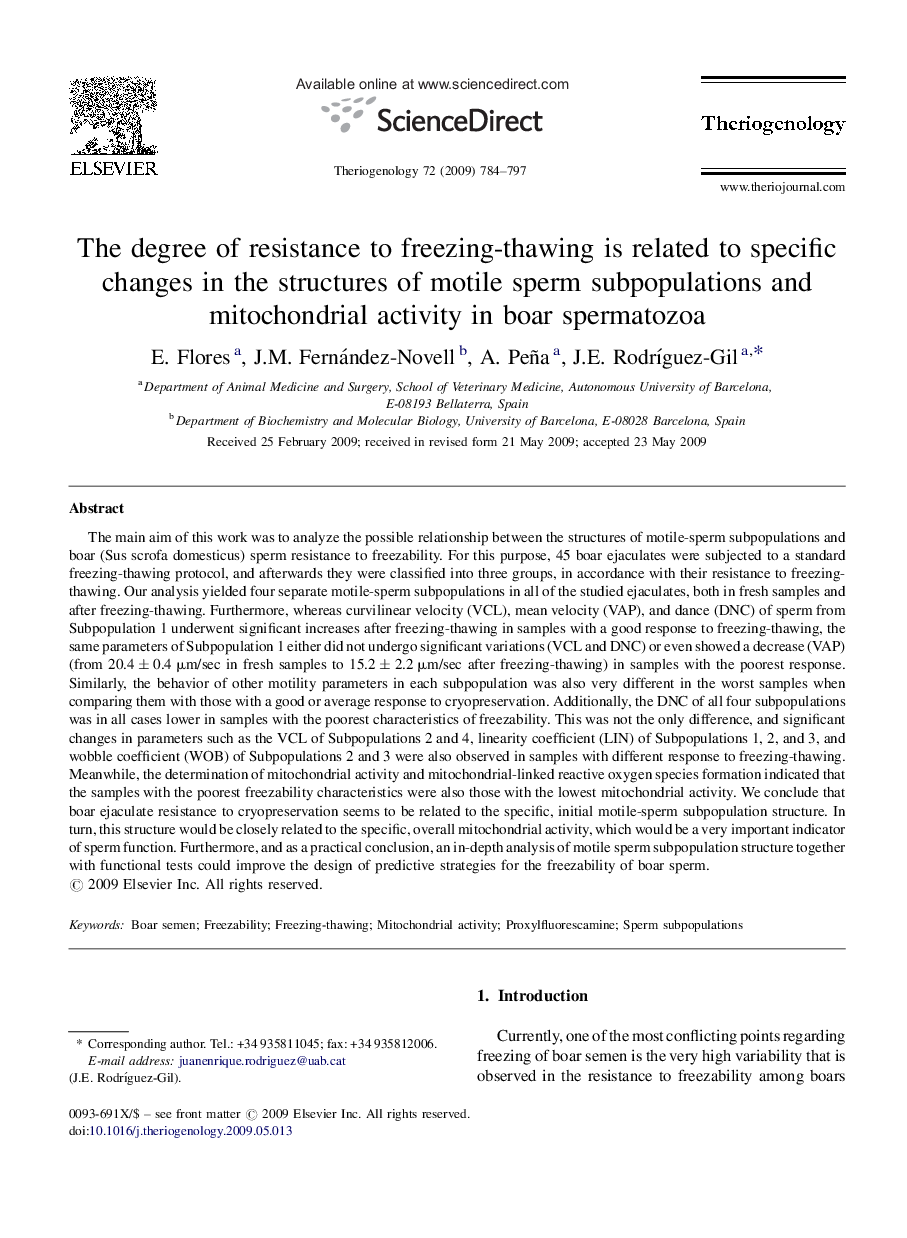| Article ID | Journal | Published Year | Pages | File Type |
|---|---|---|---|---|
| 2096674 | Theriogenology | 2009 | 14 Pages |
The main aim of this work was to analyze the possible relationship between the structures of motile-sperm subpopulations and boar (Sus scrofa domesticus) sperm resistance to freezability. For this purpose, 45 boar ejaculates were subjected to a standard freezing-thawing protocol, and afterwards they were classified into three groups, in accordance with their resistance to freezing-thawing. Our analysis yielded four separate motile-sperm subpopulations in all of the studied ejaculates, both in fresh samples and after freezing-thawing. Furthermore, whereas curvilinear velocity (VCL), mean velocity (VAP), and dance (DNC) of sperm from Subpopulation 1 underwent significant increases after freezing-thawing in samples with a good response to freezing-thawing, the same parameters of Subpopulation 1 either did not undergo significant variations (VCL and DNC) or even showed a decrease (VAP) (from 20.4 ± 0.4 μm/sec in fresh samples to 15.2 ± 2.2 μm/sec after freezing-thawing) in samples with the poorest response. Similarly, the behavior of other motility parameters in each subpopulation was also very different in the worst samples when comparing them with those with a good or average response to cryopreservation. Additionally, the DNC of all four subpopulations was in all cases lower in samples with the poorest characteristics of freezability. This was not the only difference, and significant changes in parameters such as the VCL of Subpopulations 2 and 4, linearity coefficient (LIN) of Subpopulations 1, 2, and 3, and wobble coefficient (WOB) of Subpopulations 2 and 3 were also observed in samples with different response to freezing-thawing. Meanwhile, the determination of mitochondrial activity and mitochondrial-linked reactive oxygen species formation indicated that the samples with the poorest freezability characteristics were also those with the lowest mitochondrial activity. We conclude that boar ejaculate resistance to cryopreservation seems to be related to the specific, initial motile-sperm subpopulation structure. In turn, this structure would be closely related to the specific, overall mitochondrial activity, which would be a very important indicator of sperm function. Furthermore, and as a practical conclusion, an in-depth analysis of motile sperm subpopulation structure together with functional tests could improve the design of predictive strategies for the freezability of boar sperm.
